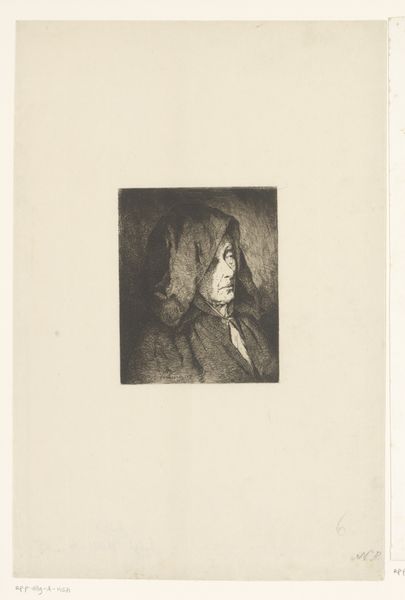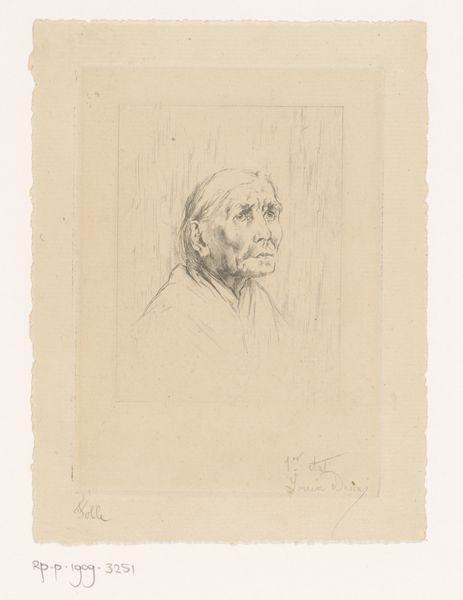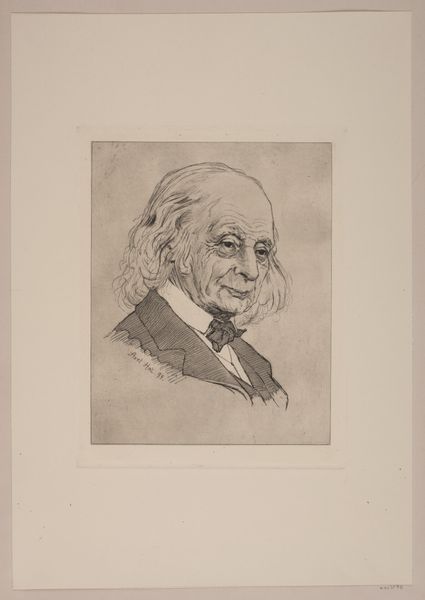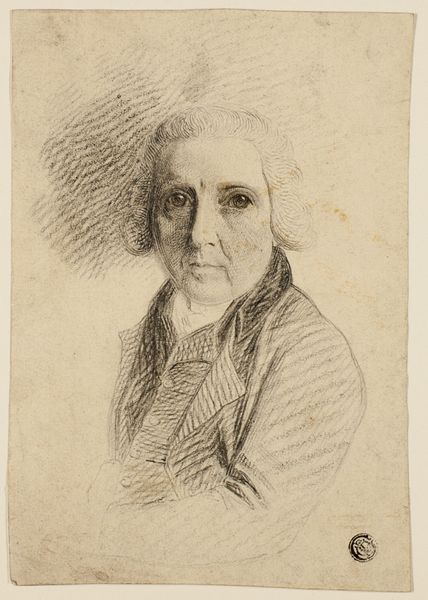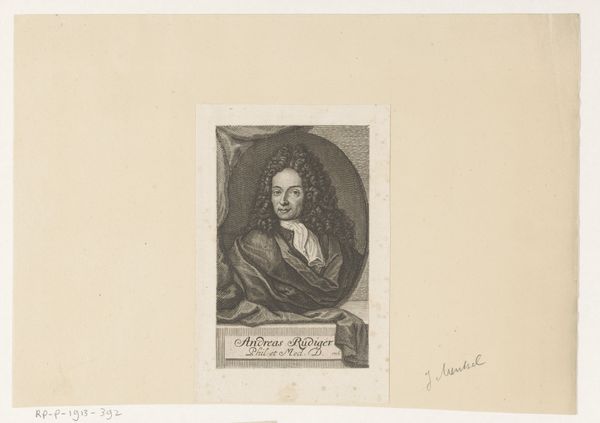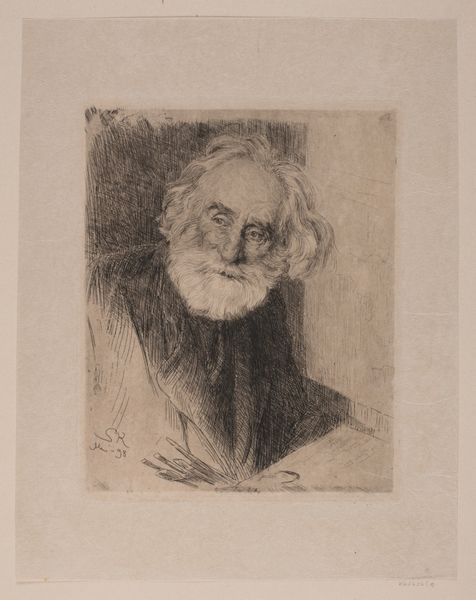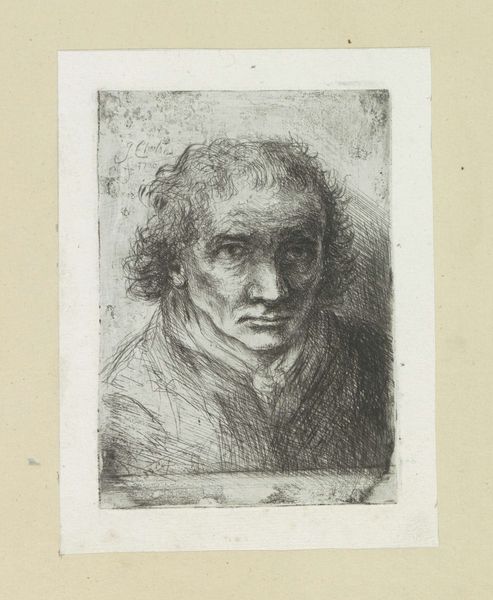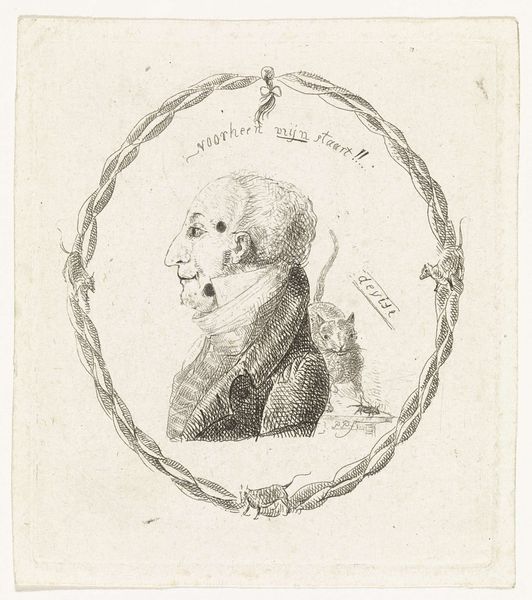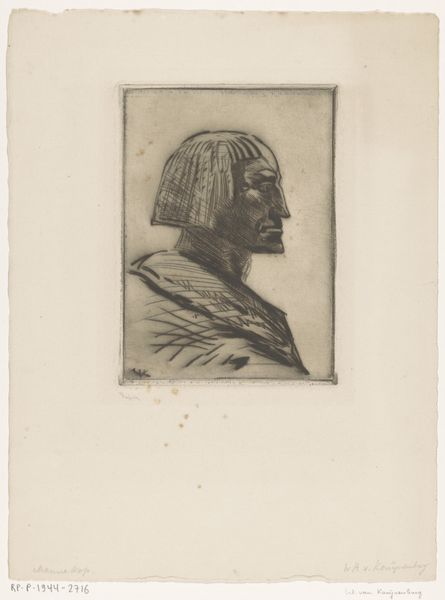
Dimensions: height 188 mm, width 137 mm
Copyright: Rijks Museum: Open Domain
Editor: Here we have Willem Linnig’s "Portret van Franz Liszt," a drawing and etching made sometime between 1852 and 1890. It's quite striking—the subject, Liszt, has a very distinguished and serious profile. I am curious: what are your initial thoughts on this piece? Curator: This etching speaks volumes about the cultural weight surrounding Franz Liszt in the 19th century. Think of the portrait as a kind of icon. The profile view, enclosed within that oval border, creates a sense of classical nobility, almost like a Roman emperor on a coin. Notice how the artist has chosen etching. Editor: Yes, I see the fine lines create a sense of detail. Is that why Linnig used that medium? Curator: Precisely! The etching technique allows for very fine, controlled lines which contribute to the sense of gravitas and intellectual power we associate with Liszt. His flowing hair becomes symbolic, almost a mane, conveying his virtuosity and charisma. Also, note the period’s obsession with celebrity… how does this image contribute to his cultural memory? Editor: It feels like he is elevating Liszt to almost a legendary status. I guess etching helped disseminate Liszt’s image wider and quicker, in line with the celebrity of the day. Curator: Absolutely, portraits like this helped solidify Liszt's image, and, through mass production, ingrained it into the popular consciousness. He becomes an enduring symbol of Romantic genius. These works serve to almost sanctify him, in a way that we now associate with musicians from that era. What do you make of the way the image seemingly floats? Editor: It is as if the image appears ephemeral in isolation of an unknown background. I suppose it helps create more cultural interest in Linnig's depiction of Liszt by suggesting a feeling of mystery. Curator: That is an interesting angle. Thanks for bringing this to light. Considering his lasting influence, this small portrait really speaks to the power of images in constructing and preserving cultural memory.
Comments
No comments
Be the first to comment and join the conversation on the ultimate creative platform.
